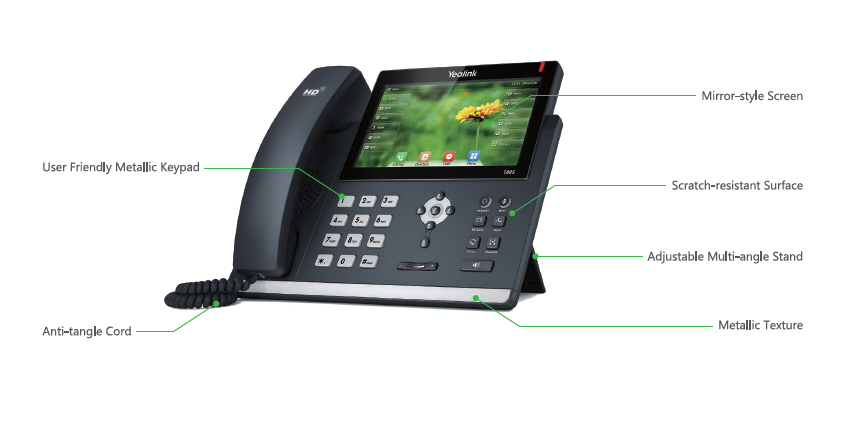Travel With Us
"Life is either a daring adventure or nothing at all."
Introduction
In today’s fast-paced digital world, effective communication is paramount for both personal and professional interactions. One of the most revolutionary advancements in this realm has been the introduction of Voice over Internet Protocol (VoIP) technology. By enabling voice calls over the internet rather than traditional phone lines, VoIP phone systems have transformed how we connect with each other. Whether you're a small business owner looking to cut down on costs or an enthusiastic techie eager to explore new technologies, setting up a DIY VoIP system can be an empowering experience.
In this comprehensive guide titled “Diving into the Technical Aspects of Setting Up a DIY VoIP System,” we will delve deep into every technical facet necessary for establishing a functional and efficient VoIP phone system. From understanding the basic components to troubleshooting common issues, this article aims to equip you with all the knowledge needed to implement your own VoIP solution.
Understanding VoIP Technology
What is VoIP?
Voice over Internet Protocol (VoIP) is a technology that allows you to make voice calls using an internet connection instead of traditional public switched telephone networks (PSTN). Simply put, it converts your voice into data packets that are transmitted over the internet and then reassembled at the recipient’s end.
How Does VoIP Work?
VoIP operates by compressing your voice into digital signals that can be sent over IP networks. This process involves several key steps:

Advantages of Using a DIY VoIP Phone System
- Cost-Effective: A DIY setup can significantly reduce monthly phone bills. Flexibility: Easily add or remove users as needed without significant infrastructure changes. Feature-Rich: Access to advanced features such as voicemail-to-email, call forwarding, and conferencing capabilities.
Key Components of a DIY VoIP Phone System
Essential Hardware Requirements
VoIP Phones: These can be either dedicated hardware devices or softphones installed on computers and mobile devices. Network Router: A reliable router ensures stable connections and manages traffic efficiently. Analog Telephone Adapter (ATA): Converts traditional phones into VoIP-compatible devices if you’re not using IP phones. Power over Ethernet (PoE) Switches: Simplifies wiring by providing power through Ethernet cables.Software Requirements
To set up your own VoIP system, you’ll need software solutions that facilitate call management and routing:

- Session Initiation Protocol (SIP) Servers User Management Interfaces Billing Systems
Setting Up Your DIY VoIP Phone System
Step-by-Step Guide to Installation
1. Assess Your Needs
Before diving in, evaluate how many users will need access, what features are essential, and what budget constraints exist.
2. Choose Your Equipment
Select appropriate hardware based on your analysis in step one—opt for quality over cost whenever possible.
3. Configure Network Settings
Proper configuration of Quality of Service (QoS) settings helps prioritize voice traffic over other types of data.
4. Install Software Components
Download and install SIP servers and necessary applications on your networked devices.

5. Connect Devices
Plug in your phones or ATA units, ensuring they are connected to power sources if required.
6. Test Calls
Conduct test calls within your network before going live—this helps identify potential issues early on.
Advanced Features of DIY VoIP Systems
Call Forwarding and Routing Options
One of the standout benefits of using a DIY VoIP phone system is its capability for customized call forwarding options:
- Forward calls based on time-of-day rules. Redirect calls when busy or unavailable.
Voice Mail Management
Many modern systems offer advanced voicemail features:
- Email notifications for missed calls. Transcription services that convert voicemails into text format.
Troubleshooting Common Issues in Your DIY Setup
Poor Call Quality Problems
If you encounter choppy audio or dropped calls, consider these troubleshooting tips:
Check bandwidth usage; ensure sufficient speed for voice quality. Inspect network configurations—QoS settings may need adjustments. Use wired connections instead of Wi-Fi where possible for stability.Connection Drops
Frequent disconnections can stem from various issues:
- Ensure firmware is updated on all devices involved in the setup. Monitor network activity—high usage may lead to interruptions.
Security Considerations for Your DIY VoIP System
Ensuring Privacy and Security
Since IP-based communication systems can be susceptible to attacks, implementing robust security measures is crucial:
Use strong passwords on all accounts. Regularly update software to patch vulnerabilities. Employ Virtual Private Networks (VPNs) for added security layers during remote access.
FAQs about Setting Up a DIY VoIP Phone System
What equipment do I need for a basic DIY VoIP setup?
You'll need at least one VoIP http://martinnlqc855.wpsuo.com/how-to-maximize-efficiency-with-your-new-voip-phone-system phone or ATA device, a reliable router with QoS capabilities, adequate bandwidth from your Internet Service Provider (ISP), and possibly PoE switches if you're using multiple IP phones.
Can I use my existing analog phones with a DIY VoIP setup?
Yes! By utilizing an Analog Telephone Adapter (ATA), you can convert traditional analog phones into compatible devices within your new system.
How do I choose between cloud-based vs self-hosted solutions?
Cloud-based solutions typically have lower upfront costs but involve ongoing subscription fees; self-hosted systems might require more initial investment but offer full control over features and customization options without recurring costs.
What are common challenges when setting up a DIY VoIP system?
Common challenges include ensuring adequate bandwidth, maintaining call quality under heavy loads, managing security risks associated with IP communications, and configuring complex features like multi-line setups or conference calling effectively.
Is it possible to scale my system as my business grows?
Absolutely! One significant advantage of using a DIY VoIP phone system is its flexibility; adding new lines or users often requires minimal effort compared to traditional telephony services.
How can I enhance my call quality further?
To enhance call quality beyond basic troubleshooting steps, consider investing in high-quality headsets/microphones for softphone users, optimizing network settings including prioritizing voice traffic through QoS configurations, or upgrading your internet plan if bandwidth limitations persist under normal operational loads.
Conclusion
Setting up a DIY VoIP phone system can seem daunting at first glance; however, it offers numerous benefits once you've navigated the initial learning curve successfully. With careful planning regarding hardware selection and network configurations alongside consideration towards security practices throughout implementation—this endeavor not only provides substantial cost savings but also enhances overall communication efficiency within any organization or personal use case scenario alike!
By “Diving into the Technical Aspects of Setting Up a DIY VoIP System,” we've aimed to demystify this innovative communication approach while equipping you with actionable insights necessary for crafting an exceptional user experience—a venture worth pursuing!
